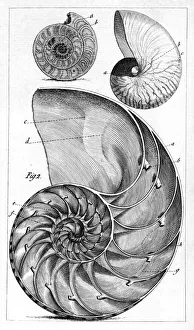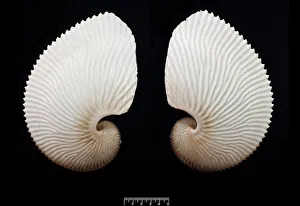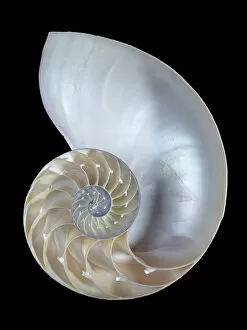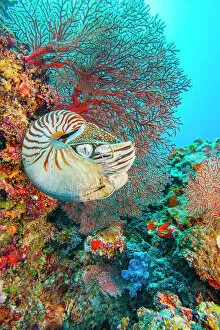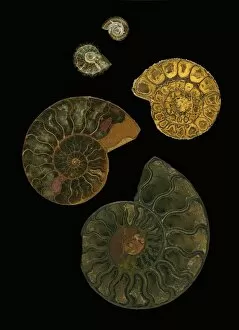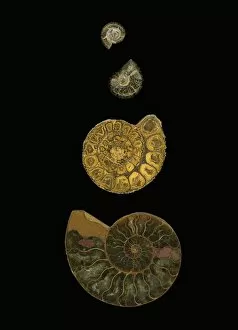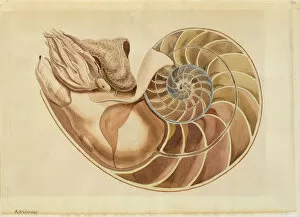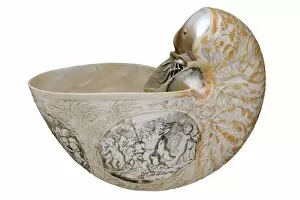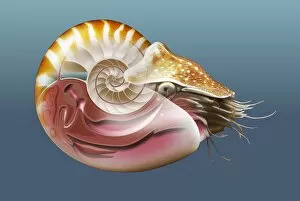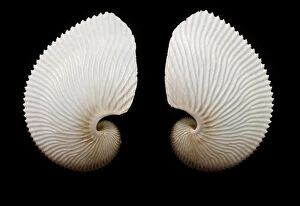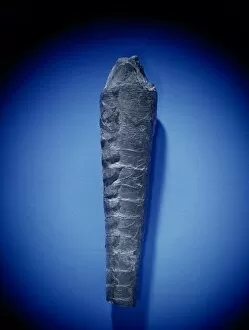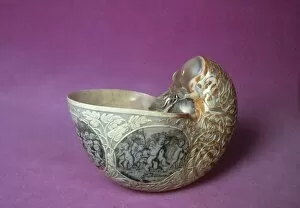Nautilidae Collection
"Unveiling the Mysteries of Nautilidae: A Journey into Ancient Oceans" Step back in time and explore the fascinating world of nautilidae
All Professionally Made to Order for Quick Shipping
"Unveiling the Mysteries of Nautilidae: A Journey into Ancient Oceans" Step back in time and explore the fascinating world of nautilidae, a family of cephalopods that has captivated scientists and nature enthusiasts alike. This engraving showcases the intricate beauty of two remarkable creatures - the nautilus and ammonite. Among them is Argonauta hians, commonly known as the brown paper nautilus, with its delicate shell resembling crumpled parchment. Its ethereal appearance belies its incredible ability to create a temporary home using secreted materials. Another member is Nautilus pompilius, aptly named the common nautilus. With its iconic spiral-shaped shell and mesmerizing patterns, it gracefully roams ocean depths while maintaining an ancient lineage that dates back millions of years. Venture to Palau in Micronesia's Pacific Ocean where you'll find Nautilus belauensis, also known as Palau chambered nautilus. Against a backdrop of vibrant coral reefs adorned with red Sea fans (Gorgonia), this species thrives amidst an ecosystem teeming with life. The diversity within this family extends beyond these specific species; various other members like Nautilus sp. , Hans Sloanes' nautilus shell, and fossilized sea shells showcase their unique characteristics through time-honored remnants or artistic representations. Nautilidae serves as a reminder of our planet's rich history and evolution. These captivating creatures have witnessed countless changes throughout millennia but continue to thrive today. Let us marvel at their resilience and embrace their enigmatic allure as we delve deeper into understanding these magnificent inhabitants from our oceans' depths.

